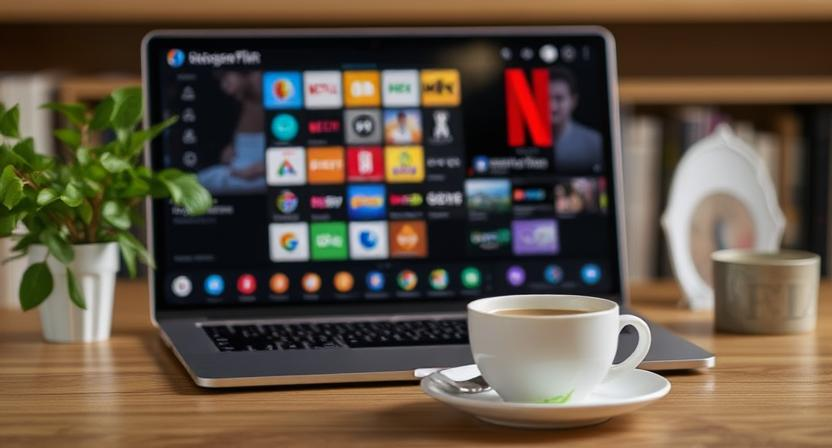At least 45 out of every 100 people spend more than they earn each month, highlighting the need to strengthen financial education to avoid future debt problems. One of the items that most affects our finances is what we call “small expenses.” These are the small outlays we make every day without realizing the impact they ultimately have on our personal finances. An example of small expenses is our morning coffee, for example.
What are the digital expenses?
In addition to these “traditional” small expenses, there are also so-called digital expenses, which have become more important with the lockdown caused by the Covid-19 pandemic. This category includes digital platforms such as Netflix, HBO, Amazon Prime, Disney+, and Spotify. For some experts, this category also includes mobility apps such as Uber and Didi, and food delivery apps such as Uber Eats and Rappi.
Streaming subscriptions: the main expense for families
Data from the financial comparison site estimates that at least 45 percent have subscribed to a streaming service, which is sure to put more than one person’s wallet in a bind. According to estimates by The Competitive Intelligence, the digital expenses related to hiring these platforms represent up to five thousand dollars per year, that is, more than 400 dollars per month, on average. For someone earning more than 20,000 dollars a month, for example, this amount may not represent a major impact. However, only two out of every 10 people in USA earn this amount. This means that, for the vast majority, it can mean the difference between making it to the end of their paycheck and not making it to the end of their paycheck. Carmen Estrada says she spends around 1,500 dollars a month on various payment platforms, including the food she orders through various apps, which represents just over 10 percent of her net income. Added to this are her traditional, fixed, and variable expenses. “The truth is, I rarely save; I mostly don’t go out.”
Other digital expenses
According to data from the National Commission for the Protection and Defense of Financial Services Users (Condusef), at least 35 percent of Mexicans order food delivery once a week; 22 percent every two weeks; and 17.7 percent more than once a week. Meanwhile, 33 percent use a mobility platform like Uber or Didi once a week; 26.7 percent use it more than once, and 13 percent use it every two weeks. Another common expense is in the world of video games. 55.7 percent of fixed console users connect to the internet through a subscription; the vast majority are so-called centennials, meaning young people born after 2000. “With technological advances, a new threat of petty spending has emerged, which directly affects your debit or credit card and can be made from your smartphone.
How much do we spend on digital expenses per month?
The institution’s estimates show that a typical person spends 90 dollars on traditional small expenses, which amounts to 2,700 dollars a month and 32,400 pesos a year. If you add to that what’s spent on platforms and other digital payments, the total amount could represent up to 20 percent of a person’s income. Imagine what you could do with that money? From enjoying the vacation of your dreams to saving or investing to multiply your income.
How to avoid digital expenses?
If after reading this text you felt alluded to, it’s time to reorient your spending to improve your personal finances. According to the latest National Financial Inclusion Survey, 65 percent of people lose control of their money due to not keeping a budget. Don’t be part of the statistic and instead incorporate all these small expenses, both digital and traditional, into that budget. Of course, the ideal is to minimize their usage. In the case of digital platforms, select the ones you’ll actually use. If you have two or more, you should objectively analyze whether you really need them all. Perhaps one is enough; that’s something only you can decide. Another option is to share those that allow it with family and friends and activate those that have free subscriptions.”Don’t pay for two apps that serve the same purpose; choose the one that’s most useful to you. Clean up the apps on your phone and delete those you don’t use or those that have the same function,”. In the case of food apps, you may be able to order fewer times a week. The rest of the time, you can prepare what you want to eat or pick it up. It’s always good to go for a walk to clear your mind. When it comes to mobility apps, they’re often used because we’re in a hurry and have no other choice. Try leaving earlier; you’ll find you’re less stressed and, at the same time, you’ll save money. Once you’ve done all this analysis, add up all the money you can save each year , and you’ll be amazed. If you absolutely cannot cancel streaming apps , order less takeout, or sporadically use app-based taxis, then factor all of this into your monthly budget so you’re not surprised at the end of the fortnight. The best way to keep our finances under control is to know how much we earn and how much we spend. This will help you avoid your budget getting out of control and going into debt in the future.




